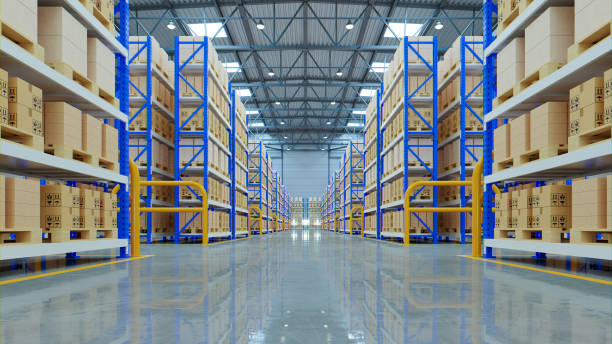Balancing accessibility and density in inventory storage design
Designing storage systems requires trade-offs between quick access to inventory and maximizing space utilization. This teaser previews practical approaches to shelving, palletization, layout choices, mezzanine additions, safety, ergonomics, automation, and retrofitting for durable, efficient operations.

Designing inventory storage means deciding how much space to devote to aisles, shelving, and handling equipment without compromising access to products or worker safety. Effective design addresses how layout and palletization influence throughput, how shelving and mezzanine options affect density, and where automation and retrofitting can improve operations. The best plans start with inventory profiling and move toward modular choices that support optimization and durability over time.
How does layout affect accessibility and density?
Layout choices determine how easily material handlers reach SKU locations and how much storage fits in a given footprint. Narrow aisles increase density but may require specialized lift equipment; wider aisles ease picking and reduce travel time. Zoning inventory by turnover rate—fast movers placed in more accessible lanes—improves overall accessibility without sacrificing too much density. Consider flow patterns for inbound and outbound logistics as part of layout optimization to avoid bottlenecks.
What role does shelving and palletization play?
Shelving and palletization set the basic units of storage. Select shelving types based on load size, frequency of access, and palletization standards for your region. Bulk pallet racking is efficient for uniform pallet loads, while selective racking favors accessibility to individual pallets. Shelving for small parts supports pick faces and reduces handling time. Proper palletization reduces damage and improves stacking efficiency, which directly affects how many units can be stored safely.
How can mezzanine and modularity increase capacity?
Adding a mezzanine is a vertical optimization strategy that multiplies floor area without expanding the building envelope, useful for light-load storage or pick modules. Modularity in racking and shelving lets operations adapt as SKU mix and volumes change; bolted and adjustable systems allow reconfiguration without full replacement. When planning mezzanine or modular installations, account for structural load, durability of materials, and integration with existing layout and safety systems.
How to balance safety, ergonomics, and durability?
Higher density can increase risk if safety and ergonomics are overlooked. Durable materials and protective features—column guards, end-of-aisle barriers, and secure anchoring—help prevent damage and collapse. Ergonomics in pick zones reduce repetitive strain and speed up tasks: position common items at waist height, use ergonomic shelving for manual picking, and ensure clear sightlines for powered equipment operators. Regular inspections and maintenance preserve durability and operational safety.
Can automation and retrofitting complement existing systems?
Automation can shift the balance toward both accessibility and density by enabling higher-density storage with reduced manual retrieval time. Automated storage and retrieval systems (AS/RS), conveyors, and pick-to-light systems improve throughput for dense configurations. Retrofitting existing racking with automation-ready features or modular upgrades is often more cost-effective than full replacement. Evaluate lifecycle costs, interoperability with warehouse management systems, and the impact on layout before committing.
Conclusion
Balancing accessibility and density involves profiling inventory, matching shelving and palletization to handling methods, and choosing layout and vertical solutions that complement workflow. Safety, ergonomics, and modularity keep systems resilient as needs change, while targeted automation and retrofitting can improve both space utilization and access. Thoughtful design prioritizes operational metrics and long-term adaptability.






